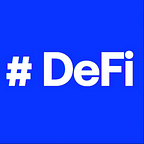"All you can borrow", how to maximize your borrowing power
Liquidity pools operating today in the Ethereum ecosystem give the opportunity to lend and borrow stable (DAI, USDC, USDT, TUSD) and volatile assets (ETH, WBTC, REP, ZRX, MKR, BAT, …).
For the purposes of this article, we keep focused on the borrowing side.
Volatile assets borrowing is mostly used by traders interested to short them.
On the other hand non-volatile assets see among the borrowers miners, ICO and their teams, market makers, arbitrageurs, crypto funds. All these categories collateralise one or more specific volatile assets they don’t want or they cannot sell to borrow stable coins to pay for ordinary expenses or to leverage their portfolio by purchasing new crypto assets.
Based on the pools usage data, the stable coins demand is much greater in terms of volume than the demand for volatile assets.
Platforms Included: MakerDAO, Compound, Fulcrum, dYdX
The main goal for the borrowers is to maximise the amount of stable coins they can borrow given a certain amount of collateral paying the lowest possible interest rate.
The problem is that it’s extremely hard to do this.
Lending platforms offer different levels of collateralization and heterogeneous assets with different fixed or variable interest rates respectively.
Below we compare them assuming to open a loan in stable coins by binding ETH as collateral.
We have decided to solve this issue building a solution that tracks the cost of debt of the integrated platforms and spreads the user’s debt across them optimizing the cost and the impact resulting from the debt distribution.
This successfully solves the problem coming up with two relevant advantages:
- For the End Users / Borrowers. Lower costs, maximized debt position and liquidity increased.
- For the Liquidity Providers. Join forces to offer borrowing services distributing the debt between themselves. This has a stabilizer effect spreading liquidity, reducing the risk of empty pools and the number of liquidations.
With regard to this second point, dex aggregators like 1inch.exchange, DEX.AG and Paraswap have already proven to be a successful case giving the possibility to trade considerable amounts and obtain the best price minimizing the impact of buying or selling on the single pool and consequently the slippage.
Our approach will be very similar, the debt will be spread among the different liquidity pools minimizing the interest rate spread (that corresponds to the slippage for dex aggregators).
The solution aims to define a universal standard for opening a loan, adding also a collection of features, missing for some underlying liquidity providers, such as the transferability of a loan and the delegation of its management.
Participate on daily discussion about DeFi in the community on Telegram
Follow-us on Twitter
Subscribe to the Newsletter
Watch meetups and guides on YouTube
Feel free to support us through donations
